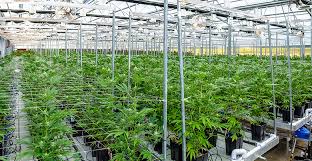As the cannabis industry continues to expand, so does the need for specialized infrastructure that can support optimal plant health and yield. One of the most crucial components of this infrastructure is the HVAC (Heating, Ventilation, as well as air Conditioning) system. A proper HVAC management is crucial in cannabis cultivation to maintain ideal growing conditions and ensuring the highest quality product. This article will provide everything you need to know regarding cannabis HVAC.
1. Importance of HVAC in Cannabis Cultivation
Cannabis plants are highly sensitive to environmental conditions, including temperature, humidity, and air circulation. A reliable HVAC system ensures that these parameters are maintained within the optimal range for each stage of growth: seedling, flowering, and vegetative. A proper HVAC control can avoid problems such as mold, mildew, and nutritional deficiencies that can severely impact plant health and yield.
2. Key Components of Cannabis HVAC Systems
Heating: During colder months or in regions with changing temperatures, ensuring constant temperature is essential. Many growers use heaters and heating mats to ensure that temperatures stay within the ideal range. A reliable heating system reduces stress on plants, which can affect their growth and potency.
Ventilation: Good air circulation helps to remove excessive humidity and heat while also bringing fresh air. This is achieved by the use of intake fans, exhaust fans as well as ductwork. Proper ventilation can help prevent the buildup in CO2, and could result in poor growth for plants. Also, it ensures that old air is replaced with oxygen-rich air that is necessary for photosynthesis.
Air Conditioning: During warmer temperatures or during summer, air conditioning becomes essential to ensure optimal temperatures. Air conditioners aid in keeping the temperature cool, thus keeping heat at bay and ensuring that plants grow in a consistent and controlled setting.
Deshumidification Cannabis plants require a particular amount of humidity in order to thrive. Insufficient humidity can cause mildew and mold, while too little can cause issues with plant respiration. Dehumidifiers are a great way to control humidity levels, ensuring they stay within the optimal levels for healthy growth.
3. Automation and Control
commercial grow room hvac design used for cannabis cultivation typically come with advanced control and automation options. These include programmable thermostats, humidity control systems, and monitoring of the environment. Automation helps to maintain consistent conditions with minimal manual intervention, reducing the cost of labor and improving efficiency.
4. Energy Efficiency
Energy efficiency is an essential factor to consider for cannabis HVAC systems, specifically due to the energy-intensive demands for indoor cultivation. Installing energy efficient HVAC systems can help reduce operational costs and minimize impacts on the environment. Options like variable speed fans, energy recovery ventilators, and efficient lighting could contribute to overall energy savings.
5. Maintenance and Monitoring
Maintaining regularly HVAC systems is vital to ensure their durability and efficiency. This includes cleaning filters, checking for leaks, and ensuring that all parts are working properly. Monitoring systems are able to give real-time information regarding temperature, humidity and air quality. This allows for rapid adjustments to maintain optimal conditions.
In summary, a well-designed and maintained HVAC system is crucial to success in cannabis cultivation. By focusing on heating air conditioning, ventilation and dehumidification, and incorporating automated practices and energy efficient methods Growers can create a perfect environment for their plants to thrive and produce high-quality yields.
